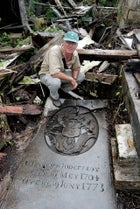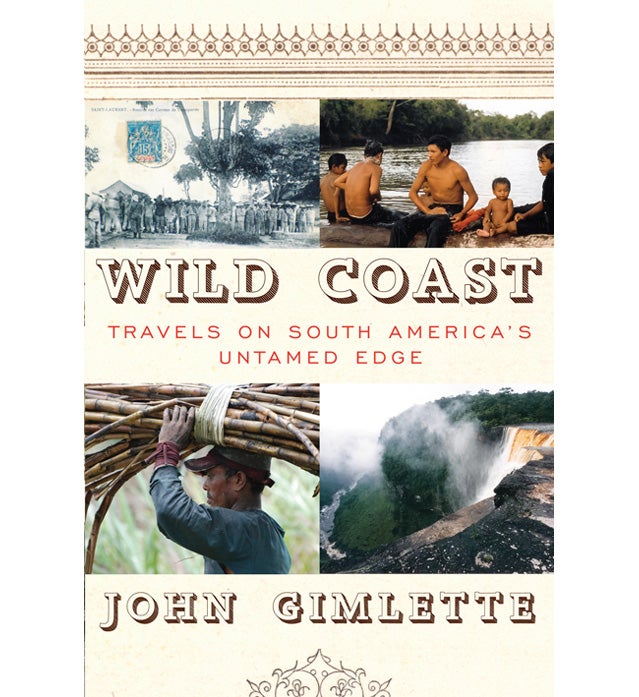Wild Coast: Travels on South America’s Untamed Edge (Alfred A. Knopf, $29), British travel writer John Gimlette’s account of three overlooked South American countries, opens in the Guyanan capital of Georgetown with a warning about hand grenades. “The people of Georgetown,” Gimlette writes, “still made a spectacle of murder.” The city sits below sea level, supported by a system of levees left over from its onetime Dutch colonizers. Yet it is still flammable, built of tinderbox wood and prone to fire, and it is violent: Georgetown’s citizens, members of the Indian diaspora and the descendents of slaves, do not get along.
Author John Gimlette
 Author John Gimlette
Author John GimletteWild Coast is a travelogue-slash-history of Guyana, Suriname, and French Guiana, South America’s northeastern countries. Over several months in late 2008, Gimlette, a British lawyer and the author of three other works of travel literature, made excursions into the forgotten and unexplored territories between Venezuela and Brazil, an area the Dutch once called the Wilde Kust.
Many of Gimlette’s journeys, from northern Guyana’s Jonestown to former French penal colonies in French Guiana, form the basis for mini histories of the region’s landmarks. Gimlette begins in Georgetown, sketching the violent decades that left Guyana’s politicians wary of errant grenades, then moves inland to Jonestown, where 900 American cultists committed suicide deep in the jungle in 1978. From there he visits Suriname, recounting a misguided Dutch colonial counterinsurgency in the 1770s, and finally French Guiana, which today remains a Gallic territory and houses one of the world’s most active satellite launchpads.
Unfortunately, Gimlette’s explorations, though rich in detail, are hampered by an impulse to describe rather than narrate or analyze. Wild Coast is a fountain of bizarre and wonderful information—British expatriates* still live along Guyana’s rivers, and in Suriname colonies of the descendents of slaves* exist autonomously in the jungle—but the book often lacks for context. We learn little, for example, of what life is like for the British or the slaves’ descendents, only that they are there.
Still, Wild Coast is worth a look. The strangeness of these countries could fill an encyclopedia, and if Gimlette has missed a few pages of analysis, he gets a pass as a curator—his histories, however incomplete, remain fascinating. “Other places may feel more magnificent,” Gimlette writes, “but nowhere feels quite so unconquered.”
* The original version of this article said that dozens of British expatriates live along Guyana’s rivers. The number is smaller than one dozen. It also said that colonies of former slaves live in Suriname. No colonies of former slaves live in Suriname.


